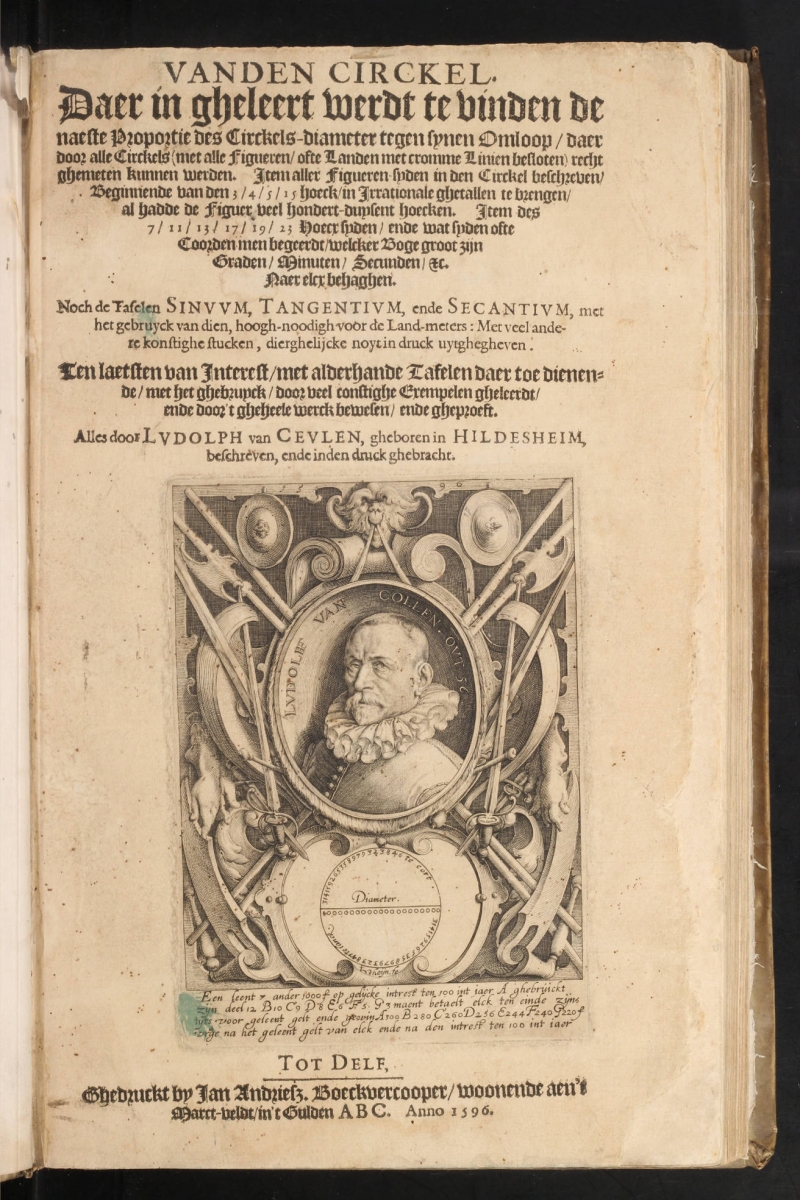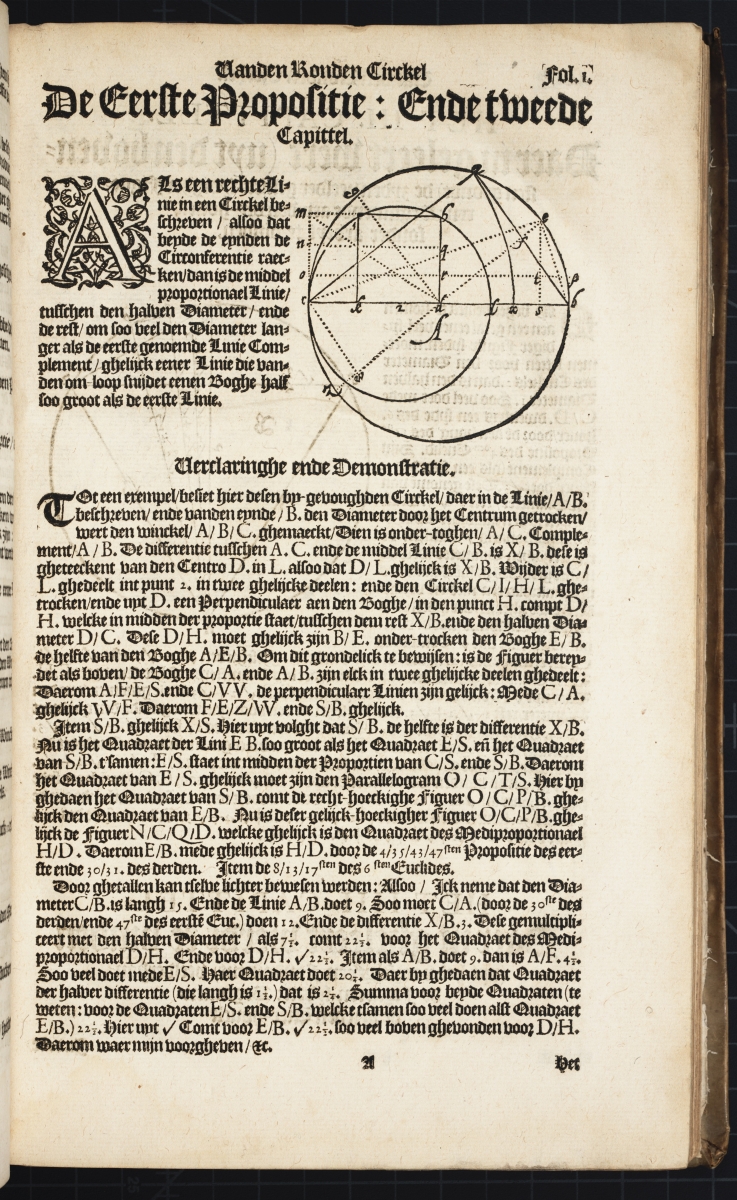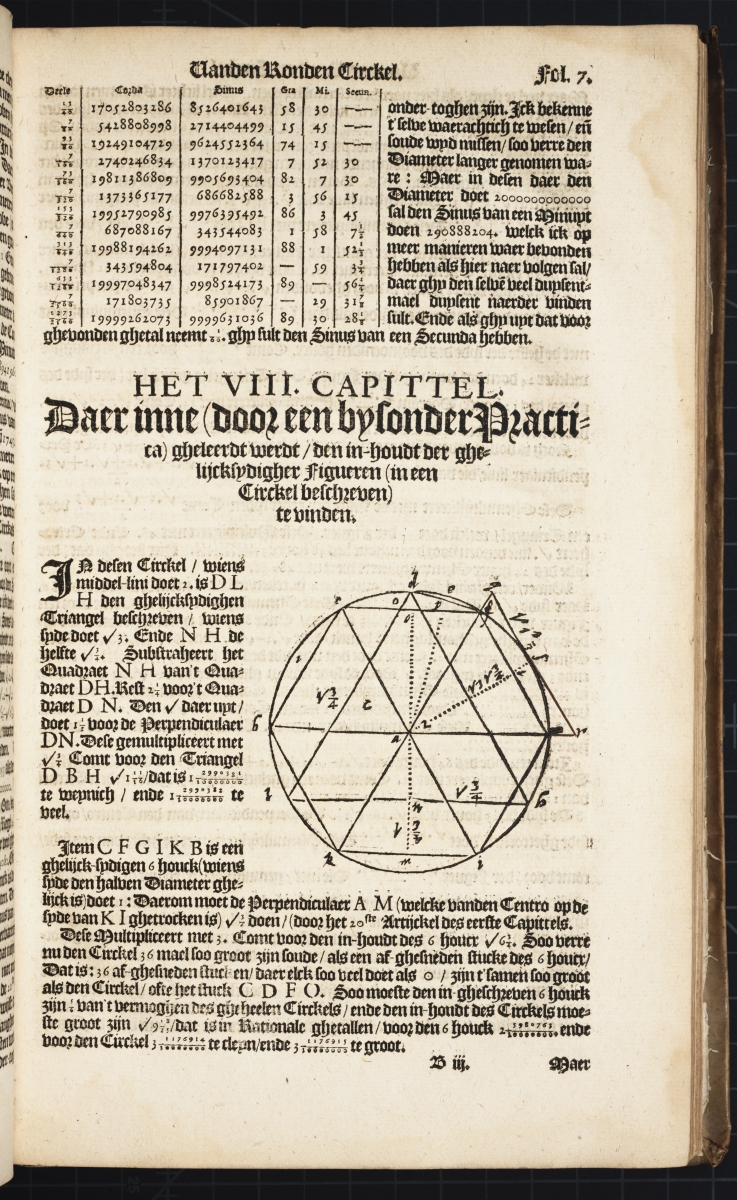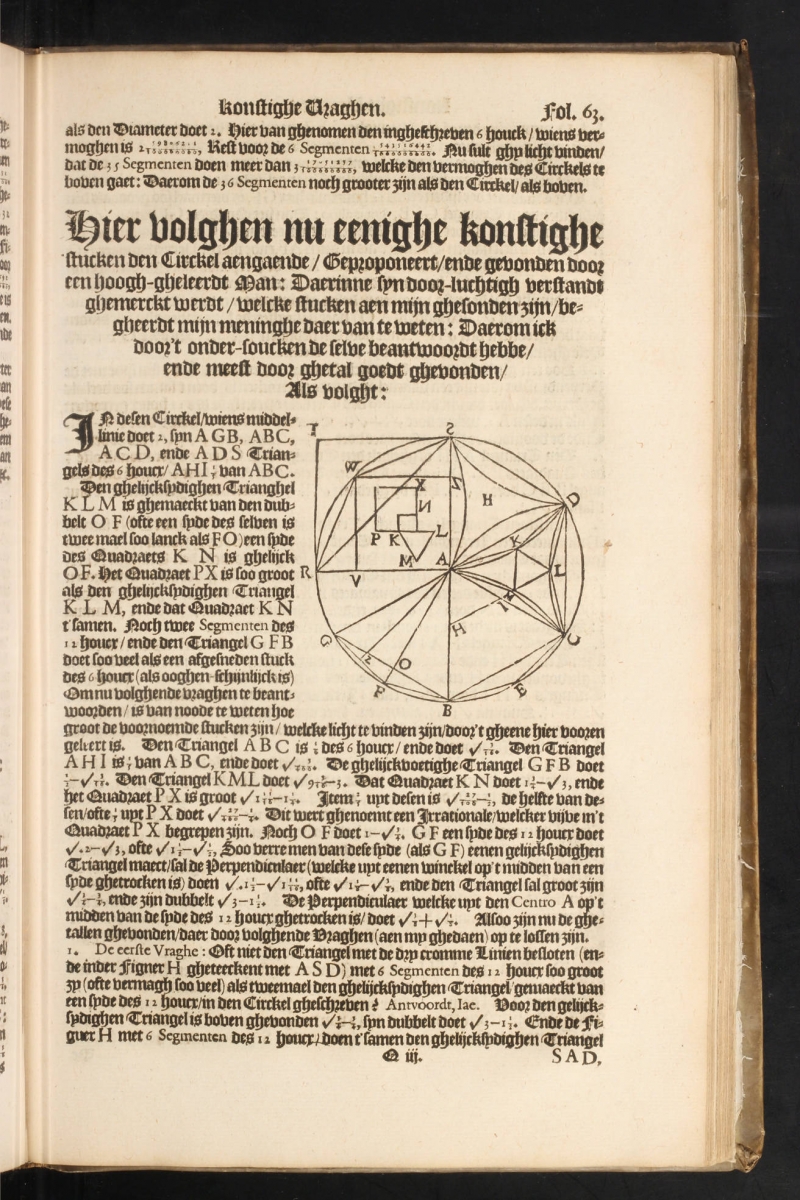- About MAA
- Membership
- MAA Publications
- Periodicals
- Blogs
- MAA Book Series
- MAA Press (an imprint of the AMS)
- MAA Notes
- MAA Reviews
- Mathematical Communication
- Information for Libraries
- Author Resources
- Advertise with MAA
- Meetings
- Competitions
- Programs
- Communities
- MAA Sections
- SIGMAA
- MAA Connect
- Students
- MAA Awards
- Awards Booklets
- Writing Awards
- Teaching Awards
- Service Awards
- Research Awards
- Lecture Awards
- Putnam Competition Individual and Team Winners
- D. E. Shaw Group AMC 8 Awards & Certificates
- Maryam Mirzakhani AMC 10 A Awards & Certificates
- Two Sigma AMC 10 B Awards & Certificates
- Jane Street AMC 12 A Awards & Certificates
- Akamai AMC 12 B Awards & Certificates
- High School Teachers
- News
You are here
Mathematical Treasure: Van Ceulen’s Vanden Circkel

The above image is the title page of Vanden Circkel, a book about the circle and \(\pi\) by Ludolph Van Ceulen (1540–1610). Published in 1596 in Dutch, it contains the longest decimal approximation of \(\pi\) at the time—20 decimal places. In fact, below the portrait of Van Ceulen, the engraving on the title page has a circle with diameter of \(10^{20}\). Across the top semicircle is “314159265358979323846 te cort” (too short), and “314159265358979323847 te lanck” (too long) is along the bottom semicircle. Later, Van Ceulen would determine \(\pi\) to 35 decimal places. A modified Latin version of the work was published in 1619, images of which can also be found on Convergence here and here.
Part of what little is known of Van Ceulen’s life before 1578 comes from the Preface of Vanden Circkel. Starting in 1566, he earned a living as a mathematics teacher, and in 1580 he opened his first fencing school. A few years later Archimedes’ method of approximating \(\pi\) was translated from the Greek for him, and Van Ceulen proceeded to use the technique to improve on approximations of \(\pi\), publishing Vanden Circkel in 1596. Below are images from folio 1 and folio 7.


Chapter 21 is devoted to analyzing a work of Joseph Justice Scaliger (1540–1609) called Cyclometrica Elementa (Elements of Circle Measurement), which had several incorrect results, including a “proof” that the area of a circle is equal to \(\frac{6}{5}\) of the area of an inscribed regular hexagon, which results in \(\pi = \frac{9}{5}\sqrt{3}\) or approximately 3.117691454. Van Ceulen doesn’t mention Scaliger by name, but rather calls him a “highly learned man”. Below is Folio 63a.

The subtitle translates as “Here follow some pieces in the art [of mathematics], concerning the circle, proposed and found by a highly learned man, in which [pieces] his illustrious mind is evident. These pieces have been sent to me and he desires to have my opinion of them. Therefore I have answered them by investigating them, and I have found most of them to be correct by means of numbers.” [Hogendijk, p. 349] (The article by Hogendijk contains an English translation of Chapter 21.)
A complete digital scan of Van Ceulen’s Vanden Circkel, call number QA33 .C48 1596, can be found in the Linda Hall Library Digital Collections.
Images in this article are courtesy of the Linda Hall Library of Science, Engineering & Technology and used with permission. The Linda Hall Library makes available all existing digital images from its collection that are in the public domain to be used for any purpose under the terms of a Creative Commons License CC by 4.0. The Library’s preferred credit line for all use is: “Courtesy of The Linda Hall Library of Science, Engineering & Technology.”
Reference
Hogendijk, Jan P. "The scholar and the fencing master: The exchanges between Joseph Justus Scaliger and Ludolph van Ceulen on the circle quadrature (1594–1596)." Historia Mathematica 37 (2010): 345–375.
Cynthia J. Huffman (Pittsburg State University), "Mathematical Treasure: Van Ceulen’s Vanden Circkel," Convergence (June 2020)




